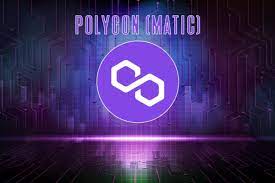Polygon (previously known as Matic Network) is a layer 2 scaling solution for Ethereum that aims to improve the scalability and usability of the Ethereum network. It achieves this by providing a framework for building multiple blockchains that are interoperable with the Ethereum main chain. Polygon uses a combination of technologies, including sidechains and a layer 2 scaling solution called Plasma, to enable faster and cheaper transactions while maintaining compatibility with Ethereum.
Here’s a brief overview of how Polygon works:
- Layer 2 Scaling: Polygon operates as a layer 2 scaling solution, which means it runs on top of the Ethereum blockchain, taking advantage of Ethereum’s security while providing faster and more cost-effective transactions.
- Sidechains: Polygon uses sidechains, which are independent blockchains that can communicate with the Ethereum main chain. These sidechains are compatible with Ethereum smart contracts, allowing developers to easily port their decentralized applications (DApps) from Ethereum to Polygon.
- Interoperability: Polygon is designed to be interoperable with other blockchains. It provides mechanisms for assets to move seamlessly between different chains, enhancing the overall flexibility of the network.
- Security: Polygon leverages Ethereum’s security model. Transactions on the sidechains are ultimately settled on the Ethereum main chain, ensuring the security of the network.

Benefits of Polygon:
- Scalability: Polygon significantly improves the scalability of Ethereum, enabling faster and cheaper transactions.
- Interoperability: The network is designed to work seamlessly with other blockchains, promoting a more interconnected blockchain ecosystem.
- Developer-Friendly: Polygon provides an easy-to-use platform for developers to build and deploy decentralized applications, leveraging their existing knowledge of Ethereum.
- User Experience: With faster transaction times and lower fees, users benefit from an improved experience when interacting with decentralized applications on the Polygon network.

As for price prediction, it’s important to note that cryptocurrency prices are highly volatile and influenced by various factors, including market sentiment, adoption, regulatory developments, and overall market conditions. Predicting the future price of a specific cryptocurrency is inherently uncertain and should be approached with caution. It’s recommended to conduct thorough research and consult with financial professionals before making any investment decisions.
Certainly! Let’s delve a bit deeper into each aspect:
Layer 2 Scaling: Polygon’s layer 2 scaling approach is crucial for addressing the scalability challenges faced by Ethereum. By operating as a layer 2 solution, it avoids the need to process every transaction on the Ethereum main chain, where transaction fees and confirmation times can be high. Instead, transactions are processed on sidechains or layer 2 solutions, offering a more efficient and cost-effective alternative.

Sidechains: The utilization of sidechain’s’ is a key feature of Polygon’s architecture. Sidechains are separate blockchains that operate alongside the Ethereum main chain. They facilitate quicker transaction processing by handling transactions off the main chain. Polygons’ sidechains” are designed to be compatible with Ethereum smart contracts, ensuring that developers can seamlessly migrate or deploy their applications on the Polygon network without significant modifications.
Interoperability: Interoperability is a vital aspect of Polygon’s design. The network aims to create a more interconnected blockchain ecosystem by allowing assets to move seamlessly between different blockchains. This interoperability is essential for fostering collaboration between various blockchain projects and enabling a more fluid transfer of assets and data.
Security: Polygon prioritizes security by leveraging Ethereum’s established security model. While transactions occur on Polygon’s sidechains, the final settlement of transactions is recorded on the Ethereum main chain. This ensures that the security standards of the Ethereum network are maintained, providing users and developers with confidence in the integrity of their transactions.
Benefits:
- Scalability: The scalability enhancement offered by Polygon is a critical advantage. The ability to process a higher volume of transactions at a lower cost is essential for the broader adoption of decentralized applications.
- Interoperability: Polygon’s commitment to interoperability promotes collaboration and synergy within the blockchain space. This interconnectedness is beneficial for the growth of the entire blockchain ecosystem.
- Developer-Friendly: Polygon provides a developer-friendly environment, making it easier for Ethereum developers to transition to or integrate with the Polygon network. The familiarity with Ethereum’s toolset and programming languages facilitates a smoother onboarding process for developers.
- User Experience: Ultimately, the improvements in scalability, lower transaction fees, and faster confirmation times contribute to an enhanced user experience. Users interacting with decentralized applications on the Polygon network are likely to experience more seamless and cost-effective transactions.
Price Prediction: Predicting the future price of a cryptocurrency involves a high degree of uncertainty. Several factors, including market sentiment, regulatory developments, technological advancements, and macroeconomic trends, can influence the price of Polygon (MATIC). Investors and analysts often use technical analysis, fundamental analysis, and market sentiment analysis to form their predictions. It’s crucial for investors to conduct thorough research, stay informed about market dynamics, and consider potential risks before making investment decisions. Additionally, consulting with financial professionals can provide valuable insights tailored to individual investment goals and risk tolerance.

Certainly, let’s continue exploring additional details about Polygon (MATIC), its technical features, and potential challenges:
Technical Features:
- Plasma Framework: In addition to sidechains, Polygon employs the Plasma framework. Plasma is a layer 2 scaling solution that allows for the creation of scalable and secure decentralized applications. It operates by creating child chains, which are essentially smaller blockchains connected to the main Ethereum chain, enhancing the overall efficiency of the network.
- POS (Proof-of-Stake) Mechanism: Polygon employs a POS consensus mechanism, which is more energy-efficient compared to the Proof-of-Work mechanism used by Ethereum. POS relies on validators who lock up a certain amount of cryptocurrency as collateral to validate transactions and create new blocks. This contributes to a more sustainable and environmentally friendly blockchain network.

- Adaptive PoS: Polygon uses Adaptive Proof-of-Stake (Adaptive PoS), a variation of the POS mechanism. Adaptive PoS aims to improve security and decentralization by dynamically adjusting the parameters of the consensus algorithm based on network conditions.
Potential Challenges:
- Competition: The blockchain space is highly competitive, with several scaling solutions and layer 2 protocols emerging. While Polygon has gained significant traction, ongoing competition and the introduction of new technologies pose challenges that may impact its market position.
- Regulatory Uncertainty: Like many blockchain projects, Polygon operates in a regulatory landscape that is still evolving. Regulatory developments and uncertainties can influence the adoption and acceptance of Polygon, as well as impact investor confidence.
- Integration Challenges: While Polygon aims to be developer-friendly, the integration of existing Ethereum projects onto the Polygon network may face challenges. Developers may need to adapt their smart contracts or applications to take full advantage of Polygon’s features.
- Network Upgrades: As with any blockchain project, network upgrades and changes may be necessary to address emerging issues, improve functionality, or implement new features. Coordinating such upgrades while maintaining backward compatibility can be a complex process.
Community and Partnerships:
Polygon’s success is also influenced by its community engagement and strategic partnerships. A robust and engaged community can contribute to the growth and development of the network. Additionally, partnerships with blockchain projects, enterprises, and other organizations can lead to increased adoption and utilization of the Polygon network.
In conclusion, while Polygon has introduced significant improvements to address Ethereum’s scalability issues, it is essential for users, developers, and investors to stay informed about the ongoing developments, challenges, and opportunities within the Polygon ecosystem and the broader blockchain industry. As the space continues to evolve, Polygon’s ability to adapt and innovate will play a crucial role in its long-term success.




